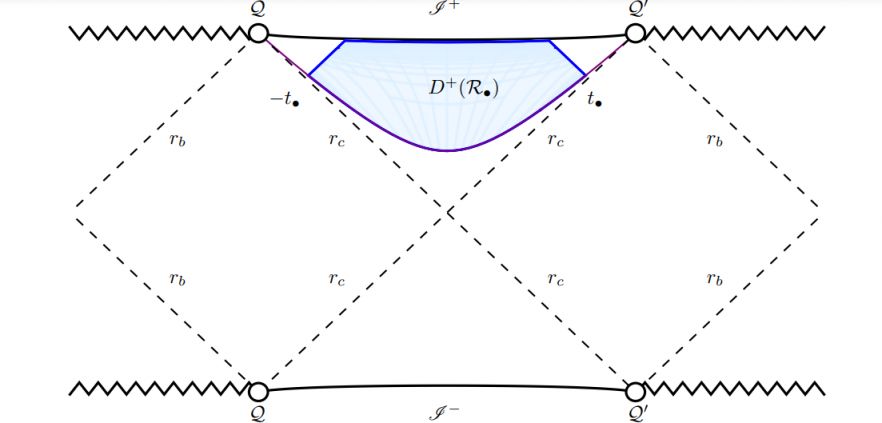General Relativity
General relativity, Einstein's theory of gravity, is the currently accepted classical theory of gravity. It has been incredibly successful at describing all observed gravitational phenomena on an incredibly wide range of scales. Yet, after more than one hundred years of studies, its rich non-linear structure has not been fully uncovered.
The Centre for Geometry, Analysis and Gravitation at Queen Mary is at the forefront of research on general relativity in a variety of contexts. Using rigorous analysis of PDE and other techniques, such as conformal and methods, researchers at QMUL are proving mathematical theorems that shed light on the inner workings of Einstein's theory of gravity. In the past twenty years or so, numerical techniques have proven to be very effective to study the highly dynamical and strong field regime of the theory. The group at QMUL is world leading in the so called numerical relativity. Our researchers have applied these techniques to model black hole binary mergers that are relevant for current and future gravitational wave observations, but also the early universe, higher dimensional black holes and anti-de Sitter spaces. World leading public codes are being developed by researchers at QMUL (www.grchombo.org).
The study of compact binaries a fertile area where different theoretical approaches can complement each other and/or be compared, thus a better understanding of this physical system. Researchers at QMUL are playing a leading role in the application of techniques (originally developed for particle physics) to GW physics. By now this approach represents a valuable new source of quantitative information about the inspiral part of the GW signal from black hole binaries. The group at Queen Mary is also pursuing other perturbative techniques, such as self-force, to model extreme mass ratio binaries that are relevant for future space-based observatories.

Penrose diagram of the Schwarzschild-de Sitter black hole

